
Schwabentor: The Gateway to Schaffhausen's History
Discover the historical charm of Schwabentor, a medieval gateway in Schaffhausen, Switzerland, offering stunning views and a glimpse into the city's past.
Schwabentor, a historic landmark in Schaffhausen, is not just a gate but a symbol of the city's rich heritage. Tourists are drawn to its medieval architecture and stunning views, making it a must-visit attraction.
A brief summary to Schwabentor
- Schwabentor, Vorstadt 69, Schaffhausen, 8200, CH
- Monday 12 am-12 am
- Tuesday 12 am-12 am
- Wednesday 12 am-12 am
- Thursday 12 am-12 am
- Friday 12 am-12 am
- Saturday 12 am-12 am
- Sunday 12 am-12 am
Local tips
- Visit early in the morning to avoid crowds and capture great photos.
- Don't forget to explore the nearby streets for local shops and eateries.
- Check out the clock on the tower for its unique design and historical significance.
- Consider taking a guided tour to learn more about the history of Schwabentor.
Getting There
-
Car
If you are driving, navigate to Vorstadt 69, 8200 Schaffhausen using your GPS or map application. Upon arriving in the city, look for signage indicating the old town area. There is limited parking available in the vicinity, so be prepared to look for a parking spot nearby. After parking, it's just a short walk to Schwabentor, approximately 5-10 minutes.
-
Public Transportation - Bus
From the Schaffhausen Train Station, take Bus Line 1 or 2 towards the 'Altstadt' (old town). The bus ride takes about 5-10 minutes. Get off at the 'Stadthalle' stop. From there, it's a short 5-minute walk to Schwabentor. Follow the signs towards the old town, and you will see Schwabentor ahead.
-
Public Transportation - Train
If you are coming from nearby cities, take a train to Schaffhausen Station. Once you arrive, exit the train station and head towards the bus terminal. You can catch a local bus as previously described or walk directly to Schwabentor, which is about a 15-minute walk from the station. Simply head southwest on Bahnhofstrasse, which will lead you into the old town.
-
Walking
If you are already in the city center, Schwabentor is easily accessible on foot. From the central square (Marktplatz), head northwest towards Vorstadt. Follow the road signs directing you to Schwabentor. It should take about 5 minutes to reach the landmark on foot.
Discover more about Schwabentor
Iconic landmarks you can’t miss
Obertorturm
0.4 km
Explore the historical Obertorturm in Schaffhausen, a stunning landmark that showcases medieval architecture and the city's rich heritage.

Stadtbefestigung (Stadtmauer, Schwabentor, Finsterwaldturm, Under Diebsturm, Munot)
0.4 km
Explore Schaffhausen's ancient city walls and fortresses for a captivating glimpse into Switzerland's medieval history and breathtaking landscapes.

Gerberbrunnen
0.5 km
Explore the enchanting Gerberbrunnen fountain in Schaffhausen, a historic gem surrounded by charming architecture and vibrant local culture.
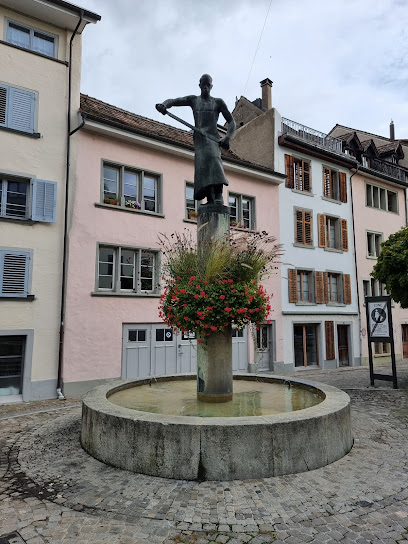
Diebsturm
0.7 km
Discover Diebsturm, a historical landmark in Schaffhausen that encapsulates the charm of Swiss medieval architecture and rich cultural heritage.

Brunnen beim Schützenhaus
0.7 km
Explore the serene beauty of Brunnen beim Schützenhaus, a tranquil fountain in Schaffhausen perfect for relaxation and picturesque strolls.

Heinrich Moser Denkmal
0.8 km
Discover the Heinrich Moser Denkmal in Schaffhausen, a tribute to Swiss watchmaking excellence and a historical landmark of cultural significance.

Nördlichster Punkt der Schweiz
13.1 km
Discover the serene beauty of Switzerland at its northernmost point, a tranquil escape in the heart of nature for unforgettable experiences.

Rathaus
17.4 km
Discover the architectural beauty and historical significance of Rathaus, a stunning landmark in the picturesque town of Stein am Rhein.

Sankt Otmar im Werd
18.0 km
Discover the serene beauty and spiritual heritage of Sankt Otmar im Werd, a captivating destination on the shores of Lake Constance.

Römische Villa Hüttwilen-Stutheien
18.9 km
Explore the captivating Römische Villa Hüttwilen-Stutheien, an archaeological treasure revealing the fascinating history of ancient Roman life in Switzerland.

Freudenfels Castle
20.2 km
Experience the rich history and luxury of Freudenfels Castle by Lake Constance, where stunning views meet exquisite dining and accommodations.

Art Museum of the Canton of Thurgau
21.6 km
Explore the Art Museum of the Canton of Thurgau, a cultural gem showcasing modern art in a historic monastery setting.

Ittinger Museum
21.6 km
Discover the captivating history and culture of the Warth region at the Ittinger Museum, a local gem for all history enthusiasts.

B&B Rosengarten am Untersee Kirsten & Tobias Kohler
22.8 km
Experience the tranquility of B&B Rosengarten am Untersee, a charming lakeside retreat offering breathtaking nature views and warm hospitality.

Stadthaus
23.2 km
Explore Winterthur's Stadthaus, a stunning architectural landmark that embodies the city's rich history and vibrant culture.

Unmissable attractions to see
Water Fountain 1940
0.2 km
Discover the historic charm of the Water Fountain 1940 in Schaffhausen, a serene attraction that offers beauty and respite in the heart of Switzerland.

Lokschuppen
0.2 km
Explore Lokschuppen in Schaffhausen, a vibrant cultural hub showcasing the rich heritage of Switzerland through stunning architecture and engaging events.
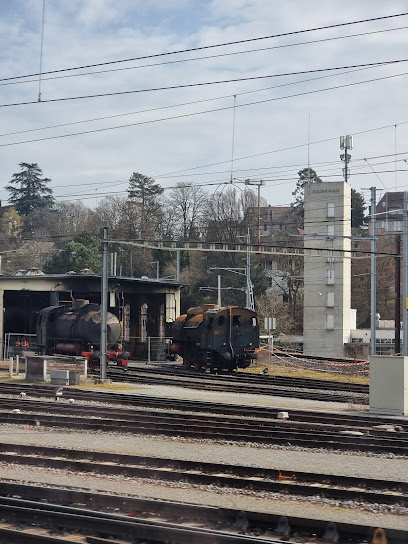
House of the Golden Ox
0.2 km
Discover the historic House of the Golden Ox in Schaffhausen, a stunning landmark showcasing rich architectural beauty and cultural heritage.

Mohrenbrunnen
0.3 km
Discover the elegance of Mohrenbrunnen, a historical fountain in Schaffhausen that encapsulates the city's rich heritage and artistic splendor.

Museum Stemmler
0.3 km
Explore the fascinating world of natural history at Museum Stemmler, featuring diverse bird and mammal exhibits in the heart of Schaffhausen.

Fronwagpl.
0.3 km
Discover the enchanting Fronwagpl. in Schaffhausen, a serene spot perfect for exploring Swiss culture and breathtaking landscapes.
Schaffhausen Altstadt
0.4 km
Explore the enchanting streets of Schaffhausen Altstadt, a historical jewel of Switzerland with stunning architecture and rich cultural heritage.

Fronwagplatz
0.4 km
Experience the vibrant atmosphere and historical charm of Fronwagplatz, a captivating fairground in the heart of Schaffhausen, Switzerland.
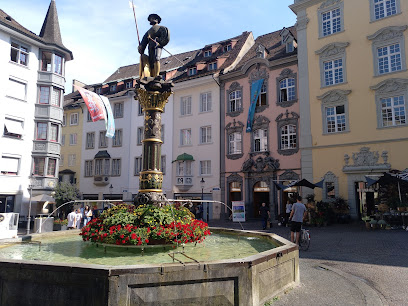
Landsknechtbrunnen
0.4 km
Discover the Landsknechtbrunnen in Schaffhausen, a stunning historical fountain that showcases rich heritage and captivating artistry in Switzerland.

Rosengarten Munot
0.4 km
Discover the enchanting Rosengarten Munot in Schaffhausen, a serene park with stunning views, vibrant gardens, and family-friendly amenities.

Haus zum Ritter
0.4 km
Discover the rich history and stunning architecture of Haus zum Ritter, a must-visit landmark in Schaffhausen, Switzerland.

Munot
0.5 km
Discover the historical allure and stunning vistas of Munot Fortress in Schaffhausen, Switzerland, a captivating blend of history and natural beauty.
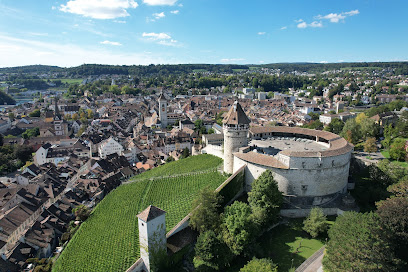
Rhein
0.5 km
Experience the breathtaking beauty and rich history of the Rhine River in Schaffhausen, Switzerland, a must-visit destination for every traveler.

Munot club - guides and information
0.5 km
Explore the historic Munot Fortress in Schaffhausen, a stunning blend of architecture, culture, and breathtaking views of the Rhine River.

Waffenkammer im Munot-Turm
0.5 km
Discover the rich military history and breathtaking views at Waffenkammer im Munot-Turm in Schaffhausen, Switzerland's iconic museum and tourist attraction.

Essential places to dine
Gasthaus zum Adler beim Schwabentor
0.0 km
Discover authentic Swiss cuisine at Gasthaus zum Adler in Schaffhausen – where tradition meets taste in a welcoming atmosphere.

Annegreth's Schützenstube
0.1 km
Experience authentic Swiss cuisine at Annegreth's Schützenstube in scenic Schaffhausen - where local flavors meet warm hospitality.

WOW Restaurant&bar
0.2 km
Experience the best of Asian cuisine at WOW Restaurant&bar in Schaffhausen - from sushi to momos, delight your senses with every dish.
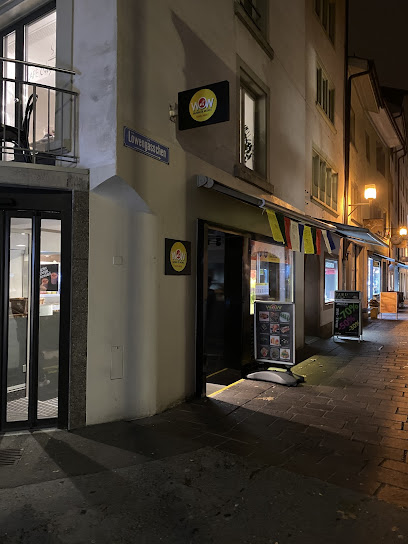
Africana Restaurant
0.2 km
Experience authentic East African cuisine at Africana Restaurant in Schaffhausen - a must-visit destination for food lovers!

Fassbeiz
0.2 km
Discover authentic Swiss flavors at Fassbeiz in Schaffhausen—where tradition meets taste in a cozy setting.

Restaurant Falken
0.3 km
Discover authentic Swiss cuisine at Restaurant Falken in Schaffhausen - where every meal tells a story.

Restaurant Ufenau, Schaffhausen
0.3 km
Experience authentic Swiss cuisine with vegan options at Restaurant Ufenau in Schaffhausen – a culinary gem for all food enthusiasts.

Santa Lucia Schaffhausen
0.3 km
Experience authentic Italian flavors at Santa Lucia Schaffhausen—where every pizza tells a story of tradition and taste.

Restaurant Kronenhof
0.3 km
Experience exquisite European and Swiss cuisine at Restaurant Kronenhof in Schaffhausen - where culinary artistry meets warm hospitality.

Original Beirut
0.4 km
Discover authentic Lebanese cuisine at Original Beirut in Schaffhausen – where every meal is a celebration of flavor and hospitality.

Restaurant La Piazza, Schaffhausen
0.5 km
Discover authentic Italian flavors at Restaurant La Piazza in Schaffhausen - where every meal is a journey through Italy's culinary traditions.

Gerberstube Osteria
0.5 km
Experience authentic Tuscan flavors at Gerberstube Osteria in Schaffhausen – where every dish tells a story.

Theaterrestaurant
0.5 km
Experience exquisite dining at Theaterrestaurant in Schaffhausen, where culinary excellence meets vibrant atmosphere.

THE_KE
0.5 km
Discover The KE in Schaffhausen: A vibrant bar and restaurant serving diverse culinary delights in an inviting atmosphere.
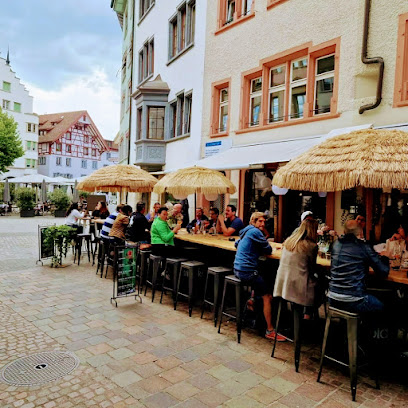
Hopfenstube
0.5 km
Experience authentic Swiss cuisine at Hopfenstube in Schaffhausen – where tradition meets taste in every delightful dish.

Markets, malls and hidden boutiques
KY! Accessoires
0.1 km
Explore KY! Accessoires for trendy and unique fashion accessories in Schaffhausen, Switzerland, perfect for style-savvy travelers.

Zebra Fashion Store Schaffhausen
0.3 km
Discover trendy women's clothing at Zebra Fashion Store in Schaffhausen, where style meets elegance in every piece.

Deuxième Second-Hand
0.3 km
Explore sustainable fashion and unique vintage finds at Deuxième Second-Hand, the heart of second-hand shopping in Schaffhausen.

Tally Weijl
0.3 km
Explore Tally Weijl in Schaffhausen for trendy women's clothing and accessories that define style and individuality.

Ziitlos Secondhand-Boutique
0.3 km
Explore unique vintage clothing at Ziitlos Secondhand-Boutique in Schaffhausen, where sustainable fashion meets individual style.

Flying Tiger Copenhagen
0.3 km
Explore Flying Tiger Copenhagen in Schaffhausen for quirky gifts, home goods, and creative supplies at affordable prices.

Schafuuser Puure Märkt
0.3 km
Discover the vibrant local culture at Schafuuser Puure Märkt, a must-visit marketplace in the heart of Schaffhausen, Switzerland.
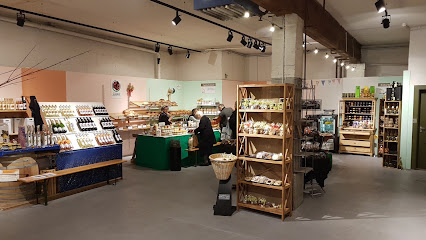
William Streetwear
0.3 km
Discover unique urban fashion at William Streetwear, the must-visit clothing shop in Schaffhausen for style-savvy travelers.

La Copine Mode für Sie
0.4 km
Discover unique fashion and stylish apparel at La Copine Mode für Sie, a boutique that embodies the charm of Schaffhausen.

Alibi Boutique
0.4 km
Explore Alibi Boutique in Schaffhausen for unique women's clothing and a delightful shopping experience amidst stylish selections.

Dux Fashionteam
0.4 km
Explore Dux Fashionteam in Schaffhausen for stylish clothing that reflects the latest trends and unique local designs.
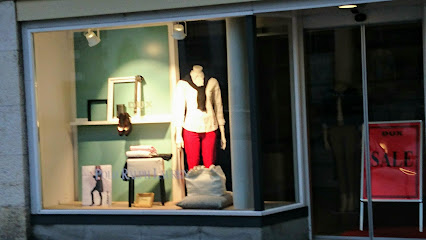
NILE
0.4 km
Explore NILE in Schaffhausen - a chic clothing shop offering unique apparel and personalized shopping experience amidst stunning local culture.
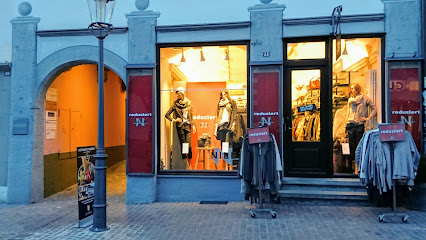
Boutique La Strada
0.4 km
Discover Boutique La Strada, Schaffhausen's premier destination for chic clothing and accessories, blending Swiss elegance with contemporary fashion.

Changemaker
0.4 km
Explore Changemaker in Schaffhausen for unique gifts, stylish accessories, and local treasures that capture the essence of your travels.

Herzklopfen
0.4 km
Discover Herzklopfen, a charming boutique in Schaffhausen, offering unique handcrafted treasures that capture the essence of Swiss artistry.

Essential bars & hidden hideouts
J's Sportsbar & Food - Schaffhausen
0.1 km
Experience the thrill of live sports and delicious food at J's Sportsbar & Food in Schaffhausen, the ultimate destination for sports enthusiasts.

Rock'n'Roll-Bar Schäferei
0.2 km
Experience the vibrant nightlife at Rock'n'Roll-Bar Schäferei in Schaffhausen, where great drinks meet live music in a rock-themed atmosphere.

La Grotta Bar
0.2 km
Discover the vibrant nightlife of La Grotta Bar, Schaffhausen's premier adult entertainment venue, where fun and excitement await every night.
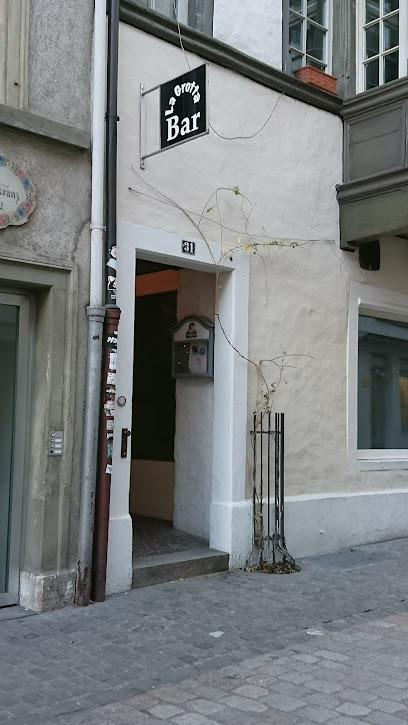
Pinball-Party
0.2 km
Discover the vibrant Pinball-Party in Schaffhausen, where retro gaming and lively socializing come together for an unforgettable experience.

Esel Schaffhausen
0.2 km
Discover the vibrant cocktail culture of Esel Schaffhausen, where innovative drinks and a cozy atmosphere await every visitor.

Café d'l mar/ Panini Bar
0.2 km
Discover the culinary delights at Café d'l mar/ Panini Bar in Schaffhausen, where delicious paninis and refreshing drinks await you.

Raponi Bar
0.3 km
Discover the inviting atmosphere of Raponi Bar in Schaffhausen, where delightful drinks and a cozy ambiance await every visitor.

Bar Cuba Club
0.3 km
Discover the lively spirit of Bar Cuba Club in Schaffhausen, where cocktails and camaraderie create unforgettable nights.

Eckhaus GmbH
0.3 km
Experience vibrant nightlife and a diverse drink menu at Eckhaus GmbH, a trendy bar in the heart of Schaffhausen.

Kerze
0.3 km
Discover the vibrant nightlife of Schaffhausen at Kerze, a cozy bar offering a great selection of drinks and a lively atmosphere.

Galerie
0.4 km
Discover the vibrant nightlife at Galerie, a welcoming bar in Schaffhausen offering a delightful selection of drinks and a cozy atmosphere.

Suren's
0.4 km
Discover the delightful flavors of grilling at Suren's in Schaffhausen, where every bite is a celebration of culinary excellence.

Romans Chlopfstübli
0.4 km
Discover the lively spirit of Schaffhausen at Romans Chlopfstübli, a premier live music bar offering unforgettable performances and a cozy atmosphere.

Barkada Burger Bar
0.4 km
Indulge in gourmet burgers and vibrant vibes at Barkada Burger Bar in Schaffhausen - a must-visit culinary haven.

NEUSTADT
0.5 km
Discover NEUSTADT, a lively bar in Schaffhausen offering craft cocktails and local brews in a vibrant atmosphere perfect for socializing.




